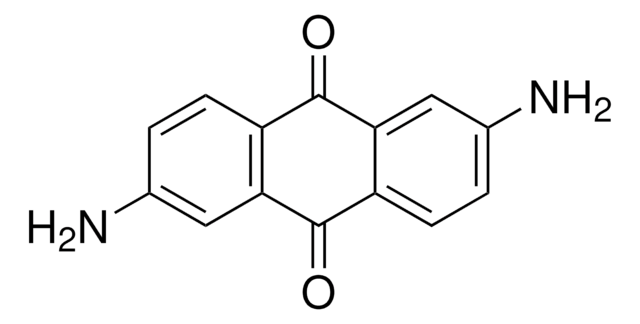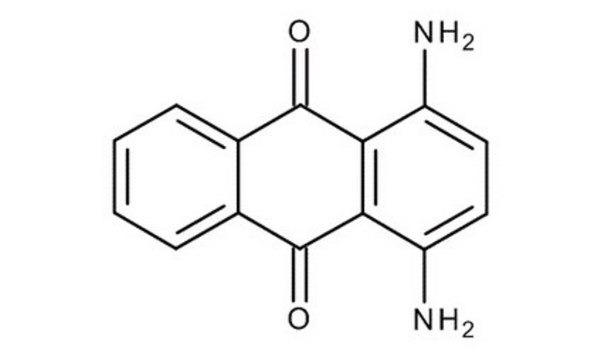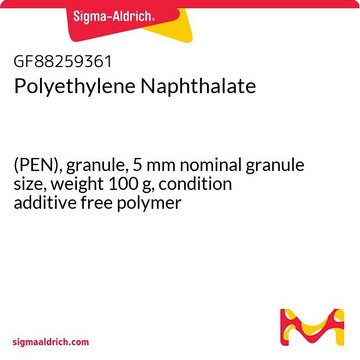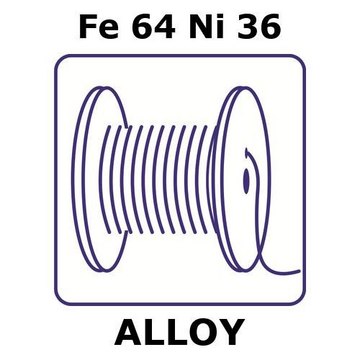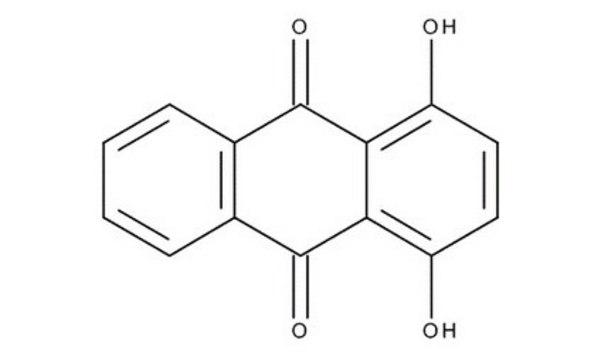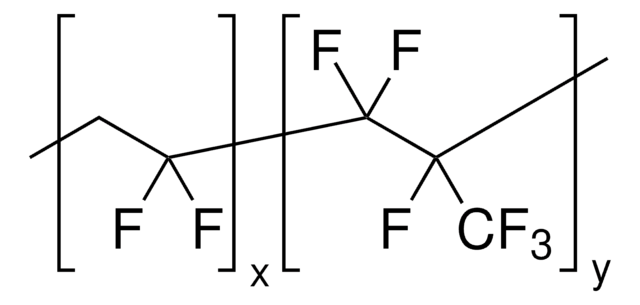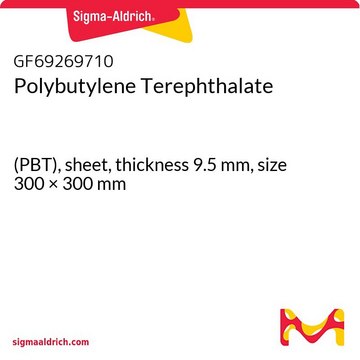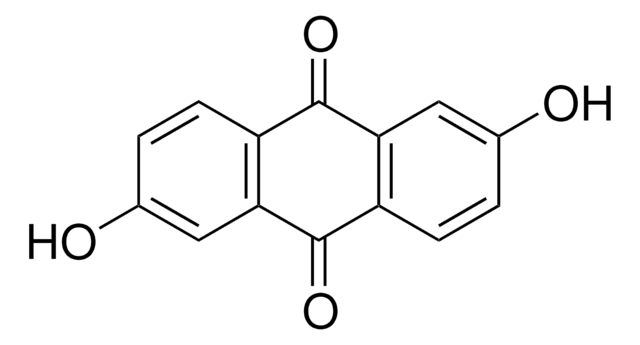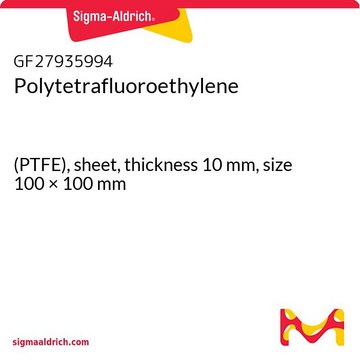367834
1,4-Diaminoanthraquinone
technical grade, ≥88.0%
Synonym(s):
1,4-Diamino-9,10-anthracenedione, 1,4-Diamino-9,10-anthraquinone
Sign Into View Organizational & Contract Pricing
All Photos(1)
About This Item
Empirical Formula (Hill Notation):
C14H10N2O2
CAS Number:
Molecular Weight:
238.24
Beilstein:
2216556
EC Number:
MDL number:
UNSPSC Code:
12162002
PubChem Substance ID:
NACRES:
NA.23
Recommended Products
grade
technical grade
Assay
≥88.0%
mp
265-269 °C (lit.)
SMILES string
Nc1ccc(N)c2C(=O)c3ccccc3C(=O)c12
InChI
1S/C14H10N2O2/c15-9-5-6-10(16)12-11(9)13(17)7-3-1-2-4-8(7)14(12)18/h1-6H,15-16H2
InChI key
FBMQNRKSAWNXBT-UHFFFAOYSA-N
Looking for similar products? Visit Product Comparison Guide
Signal Word
Warning
Hazard Statements
Precautionary Statements
Hazard Classifications
Skin Sens. 1
Storage Class Code
11 - Combustible Solids
WGK
WGK 2
Flash Point(F)
644.0 °F - closed cup
Flash Point(C)
340 °C - closed cup
Personal Protective Equipment
dust mask type N95 (US), Eyeshields, Gloves
Regulatory Information
新产品
Choose from one of the most recent versions:
Already Own This Product?
Find documentation for the products that you have recently purchased in the Document Library.
Jonathan P May et al.
Chemical communications (Cambridge, England), (8)(8), 970-971 (2003-05-15)
A novel, long-wavelength, non-fluorescent quencher (LQ), based on 1,4-diaminoanthraquinone, has been incorporated at the 3' and 5'-termini of oligonucleotides. The quencher has been used in Molecular beacons, efficiently quenching the long wavelength fluorophore, Cy5.
Giorgio Cozza et al.
Bioorganic & medicinal chemistry letters, 18(20), 5672-5675 (2008-09-19)
In eukaryotes, protein phosphorylation of serine, threonine or tyrosine residues by protein kinases plays an important role in many cellular processes. Members of the protein kinase CK1 family usually phosphorylate residues of serine that are close to other phosphoserine in
Vsevolod Katritch et al.
Journal of medicinal chemistry, 53(4), 1799-1809 (2010-01-26)
The recent progress in crystallography of G-protein coupled receptors opens an unprecedented venue for structure-based GPCR drug discovery. To test efficiency of the structure-based approach, we performed molecular docking and virtual ligand screening (VLS) of more than 4 million commercially
V Krishnakumar et al.
Spectrochimica acta. Part A, Molecular and biomolecular spectroscopy, 61(8), 1799-1809 (2005-05-03)
This work deals with the vibrational spectroscopy of 1,4-diaminoanthraquinone (1,4-DAAQ) and 1,5-dichloroanthraquinone (1,5-DCAQ). The mid and far FTIR and FT-Raman spectra were measured in the condensed state. The fundamental vibrational frequencies and intensity of the vibrational bands were evaluated using
The mutagenic effect in bacteriophage T4D of a hair dye, 1,4 diaminoanthraquinone, and of two solvents, dimethylsulfoxide and ethanol.
I Kvelland
Hereditas, 99(2), 209-213 (1983-01-01)
Our team of scientists has experience in all areas of research including Life Science, Material Science, Chemical Synthesis, Chromatography, Analytical and many others.
Contact Technical Service